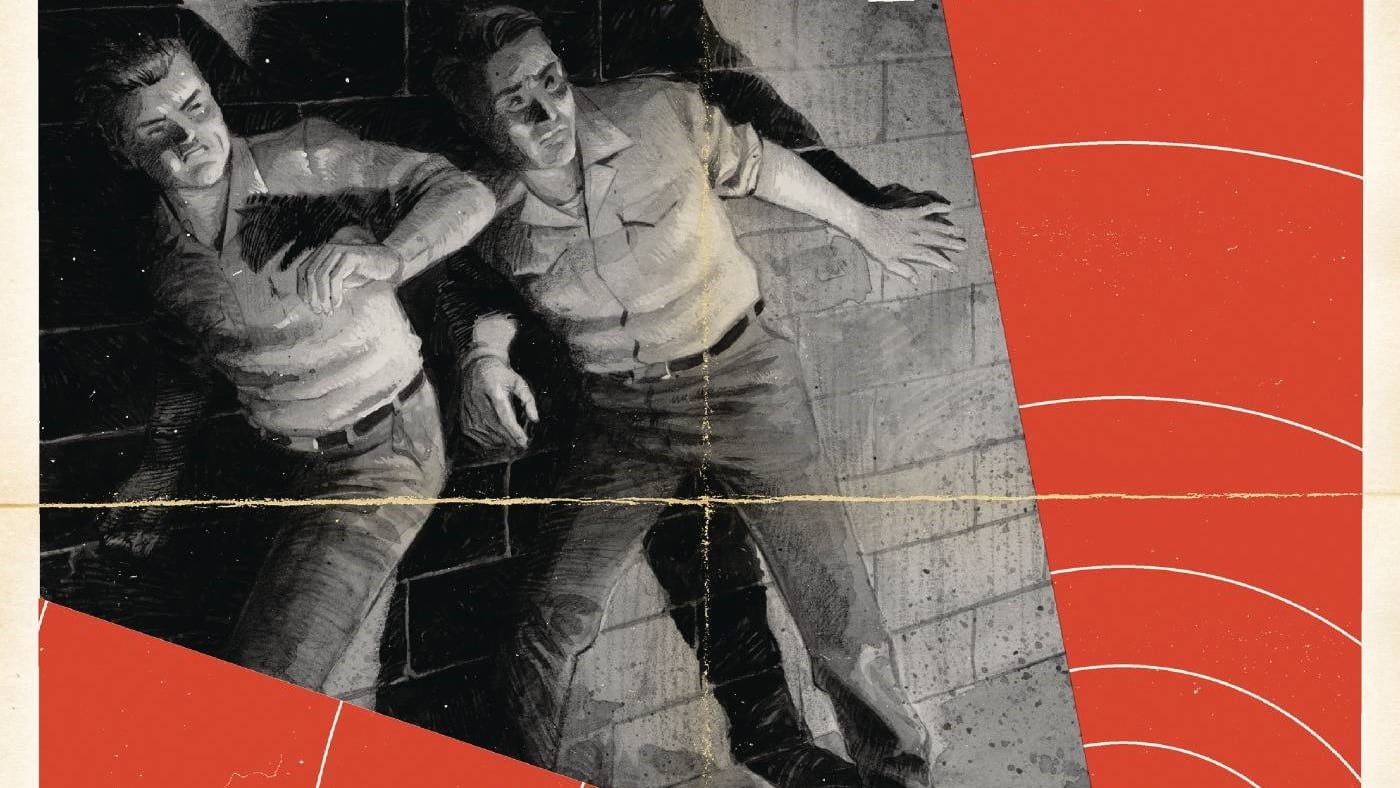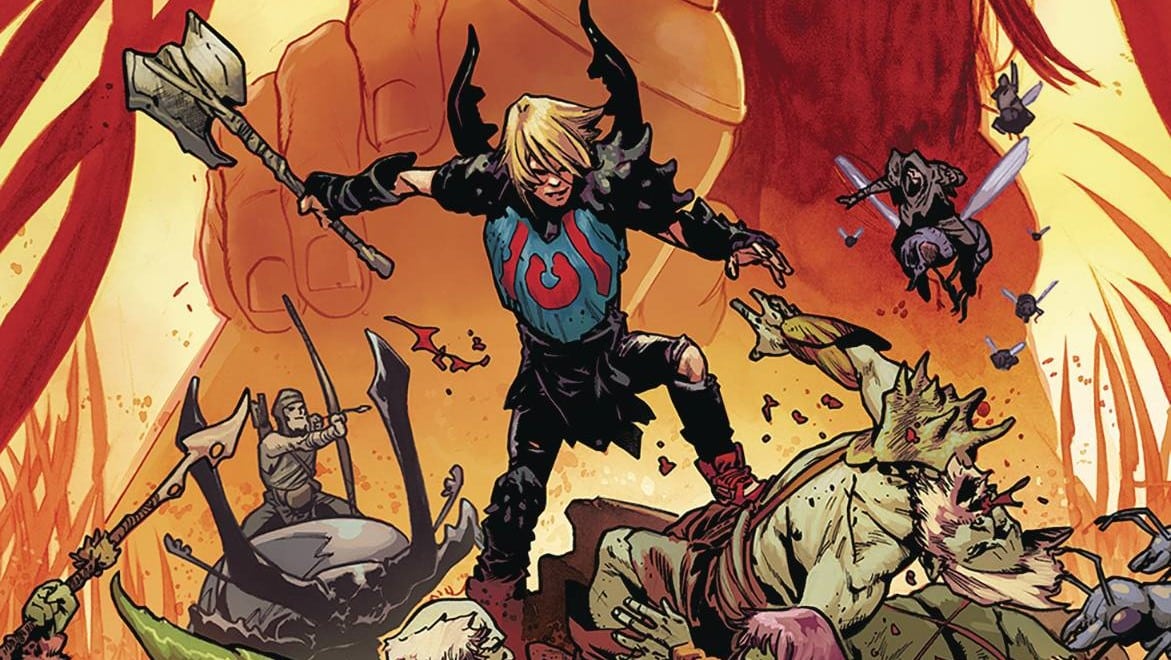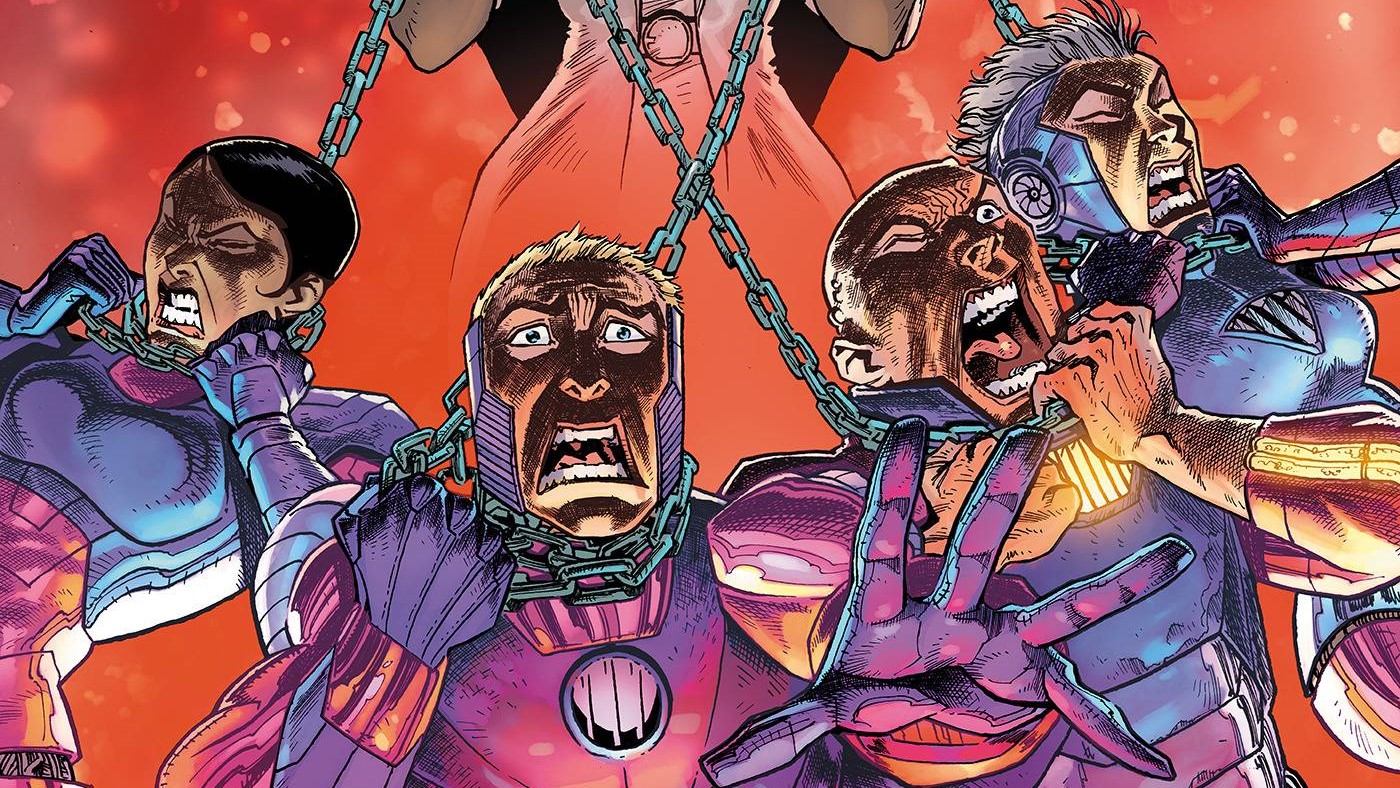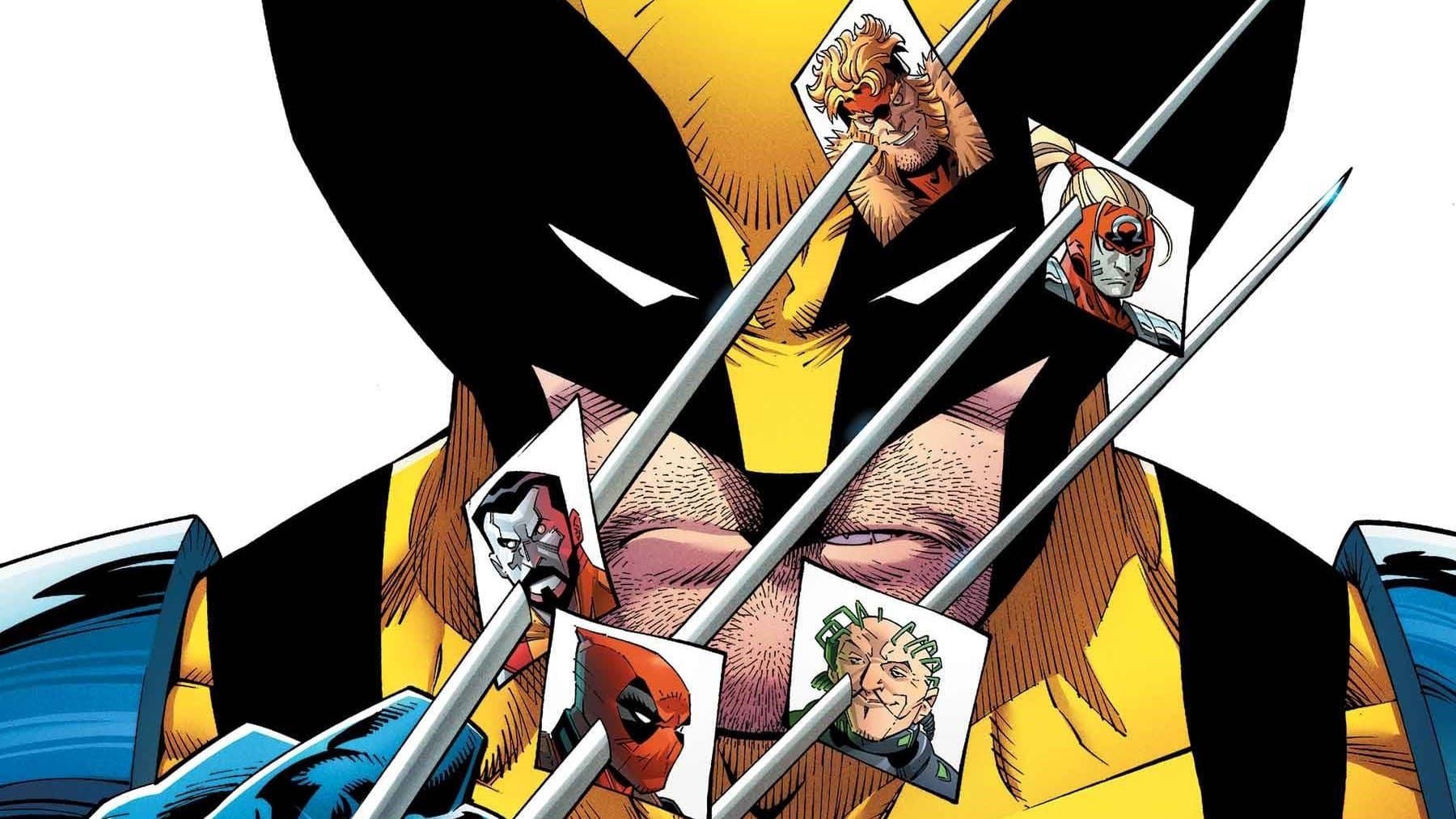This week in our roundup of indie comics, Ian Gregory examines The Rob’s latest attempt to shake up a storied franchise, Robert Secundus jumps all the way into the deep end of Savage Dragon, and Will Nevin goes to Hell (or a simulation thereof?) with Rick and Morty.
G.I. Joe: Snake Eyes: Deadgame
Story/Art: Rob Liefeld, Script/Dialogue: Chad Bowers, Colorist: Federico Blee, Additional Inks: Adelso Corona, Letterer: AndWorld Design, Publisher: IDW

To talk about Snake Eyes: Deadgame, we’re going to have to talk about Major X (I can see you going to close the tab, but hear me out).
Major X, released literally last year but also somehow 10 years ago, was Rob Liefeld being given a shot at a single-character miniseries set in a popular comics universe, with the assumption that The Rob’s distinctive style would pull in his longtime fans. Deadgame is IDW making the exact same gamble Marvel did, but with even more house commitment. Deadgame is set to be illustrated by Liefeld continually, whereas he only penciled one issue of Major X. Deadgame is launching with 30-odd variant covers, signalling IDW’s confidence (or hubris), whereas Major X launched with a shameful three covers. This move both paid off for Marvel, in that Major X sold out multiple printings, and backfired tremendously as undisclosed rights issues led to Liefeld severing ties with Marvel (for the nth time).
Situationally, Major X and Deadgame are practically the same series, but several key differences in content make Deadgame come off as less of a trainwreck. For one thing, Liefeld was born to work with G.I. Joe. Liefeld has always displayed a strict disinterest in having his mutant characters actually use their superpowers (Major X himself used his mutant powers once, on a single panel, of his last issue), and with G.I. Joe he gets to write all the military action ninja big gun explosion fights he wants, without having to deal with pesky mutant politics. Snake Eyes is another natural fit for Liefeld, as he is basically a ninja gun to be pointed in the direction of ninjas, and requires essentially no character work.
So while conceptually, Deadgame works on a more fundamental level than Major X, they both suffer from Liefeld’s desire to affect drastic change every time he sits down at a new book. In Major X, this means introducing Cable’s (second) son and a whole different X-timeline to draw from (and then, these big ideas were obliterated just a few months later with HoX/PoX). In Deadgame, Liefeld attempts to introduce the new villain as an ancient evil and enemy of Snake Eyes’ ninja clan who he always knew about, really, and has actually been there All Along. We’ll see how much of this sticks (It won’t).
Most people’s objections to Liefeld begin on a basic craft level, and his detractors won’t find anything to change their minds here. Rob’s figures are his figures, as always, and he continues to just ignore the concept of a “background” in half his panels (a particularly disturbing panel just shows Snake Eyes’ disembodied torso floating in front of a gunmetal background). Rob manages to work in some interesting layouts to show Snake Eyes’ repeated motion during fight scenes, but there’s nothing as adventurous or impactful as his earlier work. Furthermore, Rob’s pencils aren’t built for modern digital coloring, and like all of his comics in the last decade or so, his action comes off as stiff and uncomfortable. There is an overwhelming sense of flatness to Deadgame’s artwork, which makes it feel more like watching a slideshow than reading one of Rob’s pulse-pounding, screaming originals.
In my Grand Unified Theory of Liefeld, a theory so dark and powerful it may never see the light of day, the second rule is that “Rob Liefeld Can Only Ever Be as Good as His Scripter.” Go check out Youngblood (don’t) for the negative side of this theory, and New Mutants for the positive. Chad Bowers is doing his best on this series, in the grand tradition of Liefeld scripters, by trying to wrangle Liefeld’s plot and art into a coherent whole. He even manages to slip in the company-mandated “Yo Joe” with a fair deal of grace. However, for a series about a cool and silent ninja, Deadgame sure has a lot of narration boxes that completely cover some of the pages, and pepper in for description during the fight scenes. I will admit to not being a G.I. Joe expert, but this practice seems counterproductive.
In the end, for all Deadgame is better than Major X, it is not a particularly compelling comic. I felt no particular excitement for a second issue or interest in where the story would go. The fight between Snake Eyes and Dark Undead Evil Wizard Krigun Who Has Totally Been Around This Whole Time made me feel nothing more than the sort of impatience you get while waiting to be called at the dentist’s office.
Savage Dragon #250
Writer/Artist: Erik Larsen, Colorist: Nikos Koutsis, Flatter: Mike Toris, Letterer: Ferran Delgado; Additional Creators: Joe Keatinge, Ryan Alexander-Tanner, Greg Kirkpatrick, Frank Fosco, Mike Matthew, Georgios Konstantopoulos, Joe Zierman, Andy Kuhn, Rich Woodall, Fernando Pinto. Publisher: Image

I have never read a Savage Dragon comic. I believe I encountered the character back in high school, when I picked up an Invincible OHC without knowing much better, but all I can really remember from that collection is the Bad Superdad reveal. I have a bad memory.
I will never forget Savage Dragon #250.
I cannot write a review of Savage Dragon #250. I cannot write any kind of real criticism of Savage Dragon #250. Instead, I am going to give you a series of impressions and images that will, I think, capture the experience of reading Savage Dragon #250.
The first thing I saw, on the first page of this comic, was a nipple. The eye is drawn to it. The second thing I saw was a set of braces, and I immediately wondered if I had been given not Savage Dragon #250, but some sort of CBLDF defended fan-comic.
But no; this was Savage Dragon #250, and I learned that, fortunately, the tiny woman with braces was, in fact, a grown woman.
On the third page of Savage Dragon #250, the woman in braces confronts her mother and her mother’s boyfriend about their sex tape. The couple begin to make out. At the bottom of the page, Savage Dragon takes out his phone, turns on the camera, and asks the boyfriend to take off his mother-in-law’s dress.
Things get weirder starting on Page 4.
A lot of people have been wondering how fantastical comics that take place in a world vaguely like ours would tackle the global pandemic, or whether they should even try. Now, the previous sentence may sound like an extremely odd sentence to write in a review of what seems to be a superhero fetish pornography comic, but beginning on Page 4, Savage Dragon #250 also becomes a pandemic slice-of-life superhero comic. Throughout the issue, Savage Dragon talks about how crime is down now that people are staying indoors, he chats over Zoom with various superhero folks in isolation throughout the country, talks to some alternate-Earth immigrants struggling with getting back into the United States given tightening border restrictions, and helps his wife with what she laments as “the mind-numbing monotony of daily existence” in quarantine.
On Page 5, the wife sexily argues with Savage Dragon about grocery disinfectant protocol over a series of panty-shots.
By the end of this story, we’ve seen a spider-woman who shoots webbing (and the panel borders of the page) out of her vagina and two of Savage Dragon’s children punch supervillains so hard their heads explode in a horrifying cloud of gore.
An editorial note directs us to the recent issue in which another one of Savage Dragon’s children killed a “cock monster.”
This dialogue is at one point exchanged, while Savage Dragon’s naked wife, grinning bracily: lunges at his body:
Braces Wife: It’s just you… and me. And my UNQUENCHABLE DESIRE!
Savage Dragon: Hot dog!
The 20-some pages read like a man had a COVID anxiety dream and a sex dream at the same time, and just transcribed the utterly surreal series of images and snippets of dialogue. It is one of the strangest pieces of pop art I have ever consumed.
And that’s just the main story. This comic also contains 70-some pages of backup material. That material contains three stories where a superhero tries to eat a burrito, but the filling falls out.
It contains three stories where the “Deadly Duo” try to apprehend supervillain bank robbers, but one of them keeps attacking other superheroes instead. In each, the police angrily tell the crowds not to steal the dollar bills that go flying through the air. In the final Deadly Duo story, characters make multiple jokes about proper pronouns for conjoined twins.
In one story, a Superman analogue punches a giant robot, and the debris kills dozens of passersby. The final panel features this analog flying away saying “I really am a good person!” In another, superheroes beat up the Ninja Turtles. In another, Thor beats up Hercules. In another, the Captain America of 1776 is whisked to the present by “the goddess of America, Columbia,” where a confrontation between right-wingers and pussy-hat wearing protesters leaves him weeping in sorrow over what his nation has become.
In the final story, the man I understand to be the original Savage Dragon, the present Savage Dragon’s dad, confronts an evil supervillain who drives people to suicide for thoughtcrimes.
Savage Dragon #250 is a comic that moves from character moments founded on deep, complex continuity, to extremely relatable expressions of anxiety about the pandemic, to superhero gags, to pornography, to images of enraged children showered in the blood of their vanquished foes, to pornography, to banal and shitty pronoun jokes, to laments about the extremism of both sides and, in my reading, Cancel Culture, and, finally, to pornography.
Is it a dark mirror in which we can see ourselves, we can see our culture, its worst takes, its worst obsessions?
Probably not.
I don’t think Savage Dragon is the sort of thing that would lead to understanding. But I felt more and more strongly, as I turned each page, that if not understanding, I was at least achieving, by reading, a sort of penance.
Rick and Morty Go to Hell #2
Writer: Ryan Ferrier, Artist: Constanza Oroza, Colorist: Sarah Stern, Letterer: Crank! Publisher: Oni-Lion Forge

When the Oni Press Rick and Morty series ended with its 60th issue, I was bummed (mostly because of longtime writer Kyle Starks’ top-notch job), but if this — the “Go to Hell” miniseries — is a sign of how the publisher and other interested parties plan to keep one of nerd-dom’s hottest properties an ongoing concern in comics, then I reckon everything will be OK.
And I can say that because I — unlike the antiheroes/villains/however you frame them in the quiet recesses of your mind — am not in Hell or anything close to it (not quite yet, anyway).
The miniseries does not mess around in that from the first panel on the first page of the first issue, the whole Sanchez/Smith clan (that would be all of the Rick and Morty regulars for you uninitiated types) is in Hell, a place that Rick refuses to acknowledge as real even as the evidence (flames, imps, torture, etc.) piles up around him. Thus the overall narrative for the mini is established by the conclusion of #1: Rick, with Morty in tow, is looking for the entities (entity?) behind the Hell illusion and the family’s imprisonment, while everyone else shambles in what they believe to be a doomed afterlife.
In the second issue, that overall narrative only gets sharper and more interesting as Rick and Morty trawl Hell’s depths in a series of challenges in order to make an appeal as the rest of the family squabbles themselves into some tight situations. The remarkable thing from a storytelling standpoint is that all of the characters (Well, save Beth) have something to do at this point: Rick and Morty both make some emotional breakthroughs as they react to their various tortures, Jerry tries to rally the denizens of the underworld against Rick and Summer learns that courtship is hell everywhere … especially in Hell. The narrative depth stacks up nicely to any of the show’s episodes and is right there with the best of Starks’ run. (If you’re curious as to that particular apex, check out Rick and Morty #21-23, the “Doofus Jerry” arc.)
The biggest hook this miniseries has — and perhaps the thing that will ultimately determine its overall success — is the mystery from the first page that’s still alive at the end of the second issue: Is the family really in Hell? And how’d they get there? The show doesn’t really do whodunits or other mysteries (Rick is a genius and can figure out everything immediately, duh), so this feels like something fresh and different. I don’t have any guesses at this point aside from some really lame reveals (A simulation! An alternate universe! A simulation in an alternate universe!), but if writer Ryan Ferrier can pay this thing off in a satisfying way that stays true to the show, I’m going to be mighty impressed.









